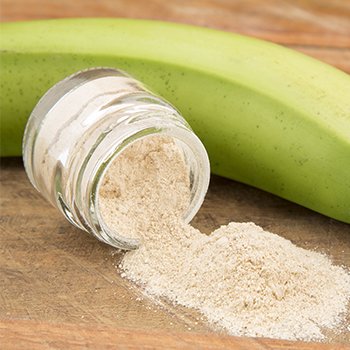นวัตกรรมการผลิตอาหารเพื่อสุขภาพในรูปแบบอัดเม็ดสำหรับเคี้ยวได้ Innovations in the Production of Health-promoting Food in Chewable Tablet Form
1720 Views |

By: ศ. ดร. ภญ. จารุภา วิโยชน์
Prof. Jarupa Viyoch, Ph.D
Director of Excellence in Research for Innovation in Chemistry and
Faculty of Pharmaceutical Sciences
Naresuan University
jarupav@nu.ac.th
เม็ดเคี้ยว (Chewable tablet) เป็นผลิตภัณฑ์รูปแบบหนึ่งที่นำมาใช้ในทางโภชนเภสัชเพื่อนำส่งสารสำคัญเข้าสู่ร่างกาย โดยสารสำคัญของผลิตภัณฑ์เม็ดเคี้ยวเพื่อสุขภาพนั้นมักเป็นสารที่อยู่ในอาหารจำพวกพืช ผัก ผลไม้ สมุนไพร และผลิตภัณฑ์จากสัตว์หรือจุลินทรีย์ โดยวัตถุประสงค์สำคัญในการเตรียมผลิตภัณฑ์รูปแบบเม็ดเคี้ยวนอกเหนือจากจะช่วยให้สะดวกต่อการกลืนแล้ว ยังช่วยให้กระบวนการปลดปล่อยสารสำคัญเข้าสู่ร่างกายเกิดขึ้นได้อย่างรวดเร็วเมื่อเปรียบเทียบกับรูปแบบเม็ดทั่วไป เนื่องจากขั้นตอนการแตกตัวเป็นอนุภาคเล็กๆ ในระบบทางเดินอาหารจะลดลง นอกจากนี้ ลักษณะของผลิตภัณฑ์แบบแห้งยังลดการสลายตัวของสารสำคัญจากปฏิกิริยาทางเคมี โดยเฉพาะปฏิกิริยาไฮโดรไลซิสเมื่อเปรียบเทียบกับผลิตภัณฑ์ที่อยู่ในรูปแบบสารละลายในน้ำอีกด้วย
องค์ประกอบทั่วไปของตำรับเม็ดเคี้ยวและกระบวนการผลิต
1. สารเจือจาง (Diluents) หรือสารเพิ่มปริมาณ (Bulking agents หรือ Fillers) สารนี้ช่วยให้ตำรับมีปริมาณสารที่เหมาะสมต่อการตอกเป็นเม็ดด้วยเครื่องตอกเม็ด
2. สารยึดเกาะ (Binders) ทำหน้าที่ช่วยให้ผงสารเกาะตัวกันและคงสภาพเป็นเม็ดเมื่อได้รับแรงตอกอัด ซึ่งอาจเป็นสารยึดเกาะที่ทั้งละลายน้ำได้หรือไม่ได้
3. สารช่วยแตกกระจาย (Disintegrants) ซึ่งทำให้เม็ดแตกตัวได้ง่าย ส่วนใหญ่จะเป็นสารที่มีคุณสมบัติดูดซับความชื้นได้ดีแล้วเกิดการพองตัวขึ้นเพื่อดันให้เม็ดแตกออก (swelling) หรือทำลายการยึดเกาะกันของผงสาร (wicking)
4. สารหล่อลื่น (Lubricants) เป็นสารที่ทำหน้าที่ลดแรงเสียดทานระหว่างเม็ดยาและผนังของเบ้าตอก และช่วยป้องกันไม่ให้เม็ดผลิตภัณฑ์ติดกับเบ้าในระหว่างการตอก ทำให้สามารถส่งเม็ดเคี้ยวออกจากเบ้าได้สะดวกขึ้น
5. สารกันติด (Antiadherents) เป็นสารที่ช่วยป้องกันไม่ให้ผงสารหรือแกรนูลติดกับหน้าสากที่ใช้ตอก ซึ่งส่งผลให้เม็ดที่ได้มีผิวที่ไม่เรียบ
6. สารช่วยไหล (Glidants) ทำหน้าที่ช่วยให้การไหลของผงผสมหรือแกรนูลดีขึ้นโดยลดแรงต้านทาน
7. สารแต่งรสหวาน (Sweeteners) นิยมนำมาใช้กลบรสของสารในตำรับที่มีรสชาติไม่ดี
8. สารแต่งกลิ่น (Flavors) เป็นสารที่มีความสำคัญต่อผลิตภัณฑ์เม็ดเคี้ยว ซึ่งนอกจากจะช่วยเสริมการกลบรสชาติที่ไม่ดีแล้ว ยังช่วยส่งเสริมให้เกิดความน่ารับประทานอีกด้วย
9. สารแต่งสี (Colorants) เพื่อช่วยเพิ่มความน่าดึงดูดหรือการรับรู้ทางประสาทสัมผัสให้ดีขึ้น
A chewable tablet is commonly used in nutraceuticals for delivering active substances into the body. The active substances in health-promoting chewable tablet products are often derived from plant-based foods, vegetables, fruits, herbs, animal products, or microorganisms. The primary objective in developing such products is to facilitate chewing, making it more convenient for swallowing, and to expedite the release of active substances into the body compared to traditional tablet products. This is achieved by reducing the particle size of the tablet, subsequently minimizing the disintegration process in the digestive tract. Furthermore, the dry form of the product plays a role in reducing the degradation of active substances through chemical reactions, such as hydrolysis, in contrast to products in water-soluble forms.
General Components of Chewable Tablets and Manufacturing Process
1. Diluents, bulking agents, or fillers are incorporated into the formulation to achieve a suitable quantity for tablet compression by tableting machines.
2. Binders play a role in binding powder particles together and maintaining the integrity of tablets when subjected to compression forces. These binders may be water-soluble or insoluble.
3. Disintegrants play a crucial role in promoting the easy disintegration of tablets. Typically, these substances exhibit excellent moisture absorption properties, resulting in swelling and/or disruption of the binding forces (wicking) among powder particles.
4. Lubricants are substances that reduce frictional forces between the tablet and the walls of the compression cavity. They also help prevent the tablets from sticking to the die walls during compression, facilitating the easy ejection of chewable tablets from the cavity.
5. Antiadherents are substances that prevent powder or granules from adhering to the surfaces of the punches used in tableting, resulting in tablets with smooth surfaces.
6. Glidants improve the flow properties of powder blends or granules by reducing resistance.
7. Sweeteners are commonly used to mask the unpleasant taste of ingredients in formulations.
8. Flavors are essential components in chewable tablet products. In addition to promoting the masking of undesirable tastes, they play a crucial role in enhancing the overall palatability of the product.
9. Colorants are used to enhance the visual appeal or improve sensory perception, making the product more attractive.




